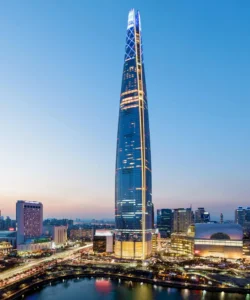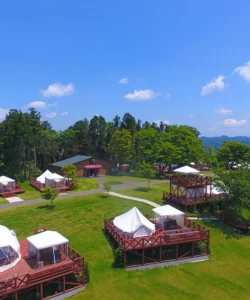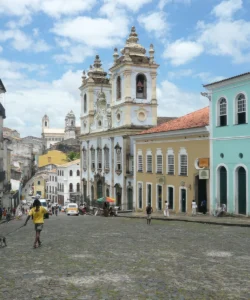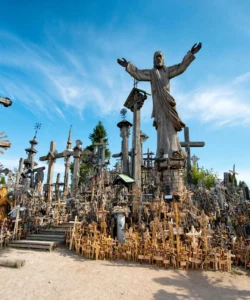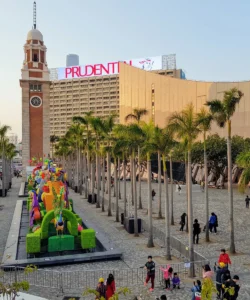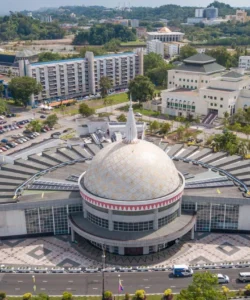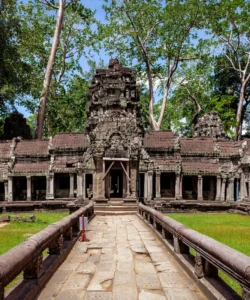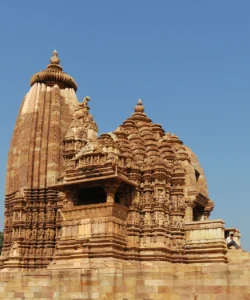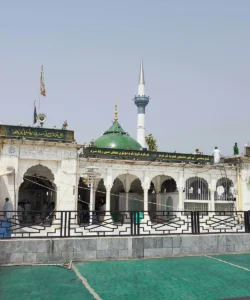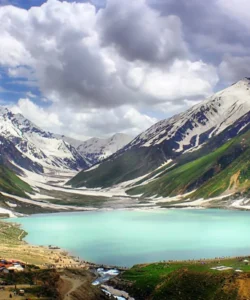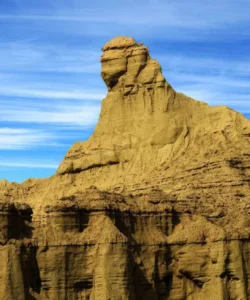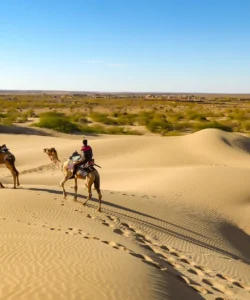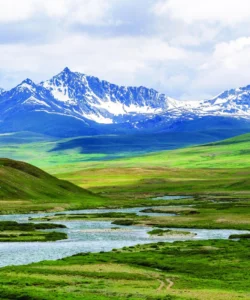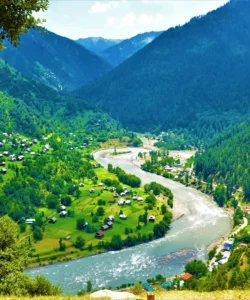Takht-i-Bahi (Pashto/Urdu: تختِ باہی, lit. ‘throne of the water spring’), is an exceptionally well-preserved ancient Buddhist monastic complex located in Mardan, Khyber-Pakhtunkhwa, Pakistan. It is considered one of the most important relics of Buddhism in all of what was once Gandhara, a region famed for its unique Greco-Buddhist art.
Name: Takht-i-Bahi (often spelled Takht Bhai)
Address: Mardan District, Khyber Pakhtunkhwa Province, Pakistan. It is situated on a hilltop, approximately 15 kilometers (9.3 miles) from Mardan city and about 80-120 kilometers (50-75 miles) from Peshawar, the provincial capital. It is often visited alongside the neighboring ancient city remains at Sahr-i-Bahlol.
How to Get There:
Takht-i-Bahi is a significant archaeological site and is accessible from major cities in Pakistan.
- By Air: The closest major airport is Islamabad International Airport (ISB). From Islamabad, you would travel by road to Mardan or directly to Takht-i-Bahi.
- From Islamabad/Rawalpindi:
- By Car/Taxi: This is the most common and convenient way. The drive from Islamabad to Takht-i-Bahi takes approximately 2 to 2.5 hours via the M-1 Motorway (approx. 160 km). Many tour operators offer day trips from Islamabad that include Takht-i-Bahi.
- By Bus: You can take a bus from Islamabad to Mardan, and then hire a local taxi or rickshaw to the site (about 15 km from Mardan).
- From Peshawar: The drive from Peshawar to Takht-i-Bahi is shorter, around 1 to 1.5 hours.
- Within the Site: The monastic complex is located atop a small hill (around 150 meters / 500 ft high). There’s a road and car park below the ruins, and a path leads up to the complex. The different areas within the complex are explored on foot.
- Entrance Tickets: Tickets are usually required to enter the archaeological site.
- Best Time to Visit: The cooler, dry months from October to March are ideal for visiting, as summers can be very hot. Early mornings are recommended to avoid crowds and the heat.
Landscape and Architecture:
Takht-i-Bahi’s “architecture” is a prime example of ancient Gandharan Buddhist monastic construction, characterized by its use of local stone and intricate detailing, skillfully adapted to its hilltop setting.
- Hilltop Location: The monastic complex is spectacularly positioned on various hilltops (ranging from 36.6 meters to 152.4 meters in height), which protected it from invasions and contributed to its exceptional preservation. The name “Takht-i-Bahi” itself is thought to mean “spring from the top” or “high spring,” referencing springs on the hill.
- Stone Construction: All the buildings on the site are constructed from local stone (often described as Gandhara patterns or “diaper style,” using local dressed and semi-dressed stone blocks) and are mortared with lime and mud. This durable construction material has contributed significantly to its longevity.
- Complex Layout: The site is a comprehensive Buddhist monastic complex, encompassing various interconnected areas that reflect different aspects of monastic life and worship:
- Stupa Court: A central courtyard surrounded by a cluster of stupas. This is the main focus of the complex.
- Monastic Chambers: Individual cells arranged around a courtyard, designed for monks’ living quarters, along with assembly halls and a dining area.
- Temple Complex: Consisting of stupas and similar to the Stupa Court, but often of later construction, showing the evolution of the site.
- Tantric Monastic Complex: Uniquely, this section features small, dark cells with low openings, which are believed to have been used for certain forms of Tantric meditation.
- Covered Footpaths: Covered stepped passageways connect different parts of the complex.
- Secular Buildings: Additional structures may have served as residences, meeting halls, or for secular purposes for the supporting community.
- Gandhara Art Influence: As a significant site in the heart of ancient Gandhara, the architecture and especially the sculptures (many now housed in museums) found at Takht-i-Bahi reflect the distinctive Greco-Buddhist art style. This fusion of Hellenistic (Greek and Roman) artistic techniques with Buddhist iconography is evident in the naturalistic drapery and classical features of Buddha images.
What Makes It Famous:
- UNESCO World Heritage Site: Takht-i-Bahi, along with the neighboring city remains at Sahr-i-Bahlol, was listed as a UNESCO World Heritage Site in 1980. UNESCO describes it as “exceptionally well-preserved” and representative of Buddhist monastic centers of its era.
- Exceptionally Well-Preserved Buddhist Monastery: It is widely considered one of the most well-preserved and complete Buddhist monastic complexes from the Gandhara period (1st to 7th century CE) in Pakistan. Its hilltop location helped it escape the destruction that befell many other Buddhist sites.
- Representative of Gandharan Buddhist Architecture: Archaeologists regard the complex as being particularly representative of the architecture and development of Buddhist monastic centers from its era, offering crucial insights into Buddhist life during that period.
- Historical Significance: Founded in the early 1st century CE, with inscriptions bearing the name of Indo-Parthian king Gondophares, the monastery was in continuous use until the 7th century CE. It shows phases of expansion and development over an 800-year period.
- Source of Gandhara Art Masterpieces: Numerous important Gandharan sculptures of the Buddha, Bodhisattvas, and other figures (some now in the British Museum and other international museums) originated from Takht-i-Bahi, showcasing the high artistic quality of the region.
- Insight into Monastic Life: The layout of the monastic cells, assembly halls, and dining areas provides a tangible understanding of how Buddhist monks lived and practiced in ancient times.
- Tantric Meditation Cells: The presence of a distinct complex with small, dark cells possibly used for Tantric meditation offers a unique glimpse into diverse Buddhist practices.
Differences from Some Other Wonders:
- Well-Preserved Monastic Complex: Unlike other ancient cities or forts (e.g., Mohenjo-daro or Harappa, which are urban centers; or the Red Fort, which is a fortress-palace), Takht-i-Bahi is a specifically Buddhist monastic complex that is remarkably well-preserved, offering a full picture of ancient monastic life.
- Gandhara Art and Greco-Buddhist Fusion: Similar to Taxila (which was also a Gandharan center), Takht-i-Bahi is a prime site for witnessing the unique fusion of Hellenistic (Greek and Roman) artistic techniques with Buddhist iconography (Gandhara Art). This stylistic blend sets it apart from purely Indian Buddhist sites like Ajanta or Borobudur.
- Hilltop Location for Preservation: Its strategic location on a remote hilltop is credited with its exceptional preservation, allowing it to largely escape the destruction suffered by many other Buddhist sites in the region, including during the Hun invasions. This environmental protection is a key differentiator.
- No Grand Stupa (like a single monumental one): While it has a Stupa Court with many smaller stupas, it doesn’t feature a single, colossal stupa on the scale of Borobudur or Shwedagon Pagoda. Its architectural grandeur is in the completeness of the monastic complex itself.
- Focus on Monastic Life: While other Buddhist sites may be pilgrimage temples or large stupas, Takht-i-Bahi offers a deep dive into the architecture and layout of daily monastic life and practice, from individual cells to assembly halls and meditation areas.
- Dated Inscriptions: The presence of inscriptions directly linking the monastery’s founding to specific Indo-Parthian kings (like Gondophares) provides crucial historical dating and context.
- Archaeological Rediscovery: Like Ajanta, it was “rediscovered” and excavated in the modern era after centuries of being abandoned and overgrown, adding a sense of historical unveiling.
Takht-i-Bahi Photos:































